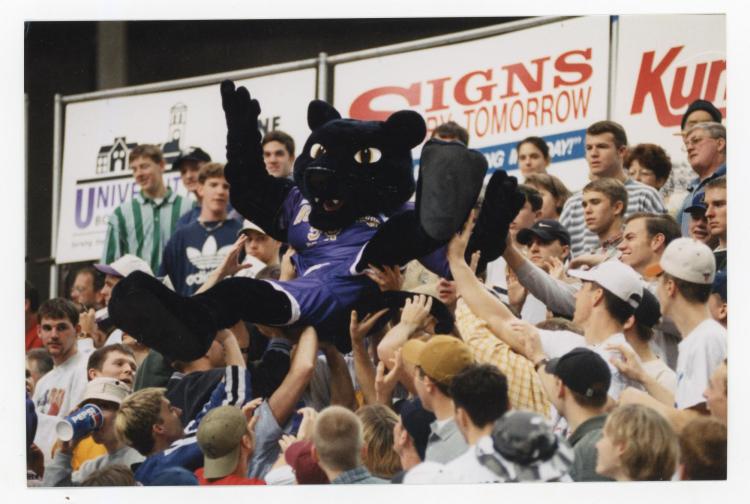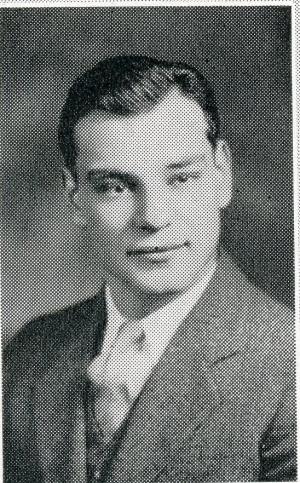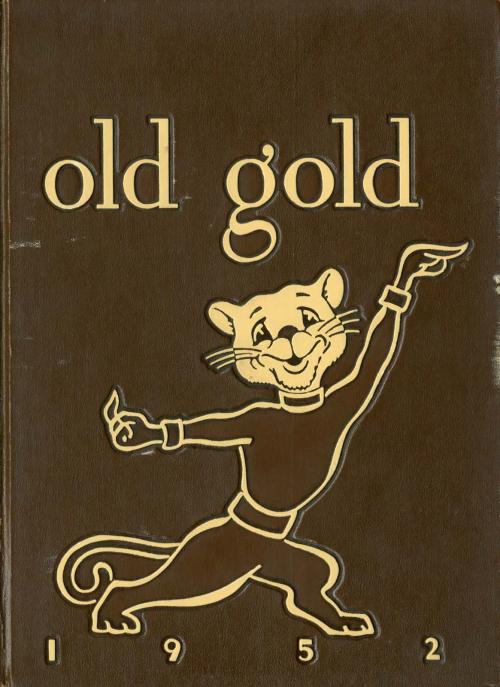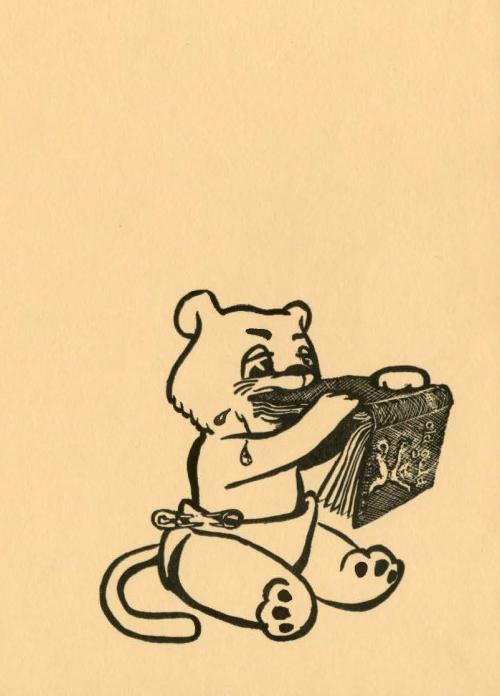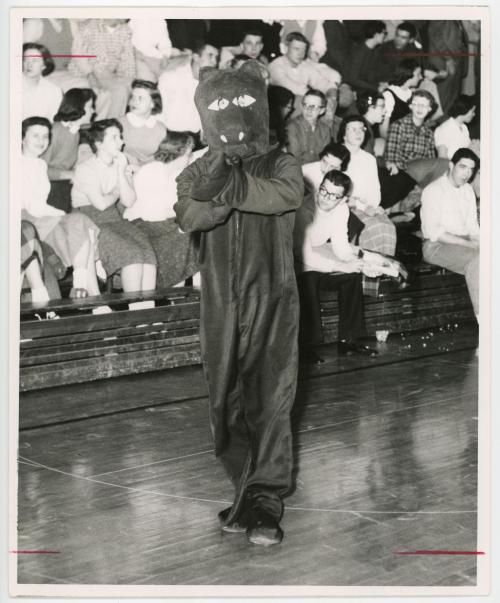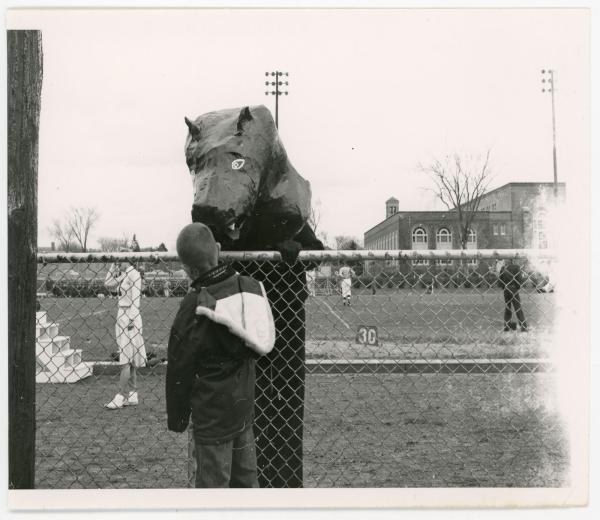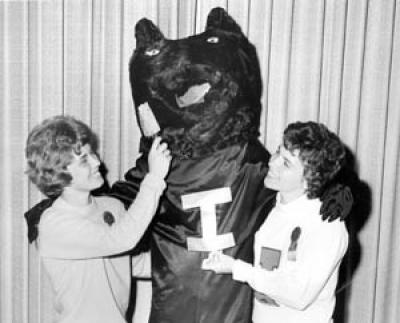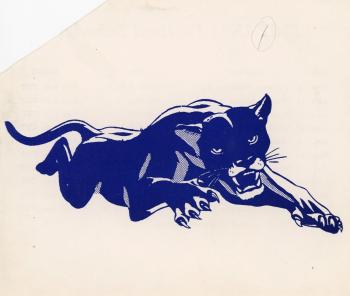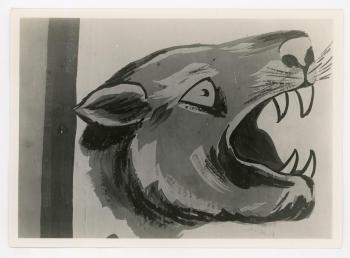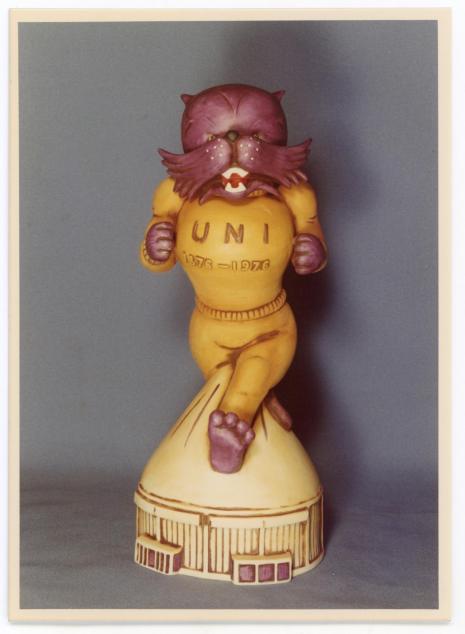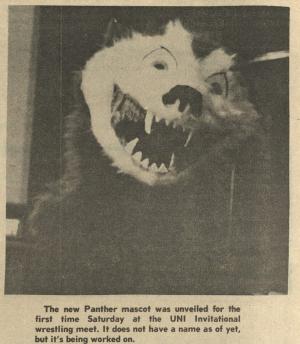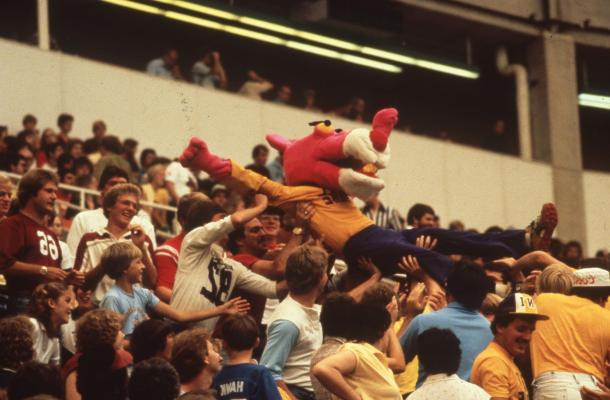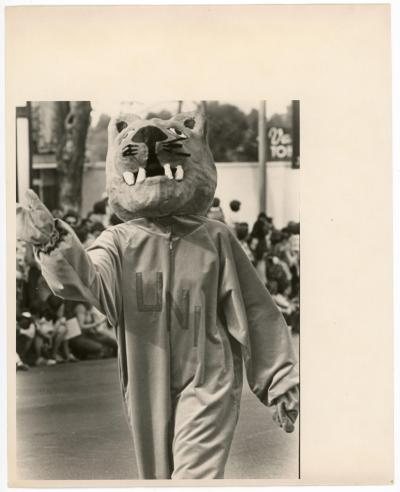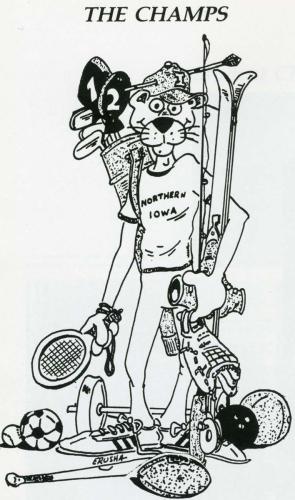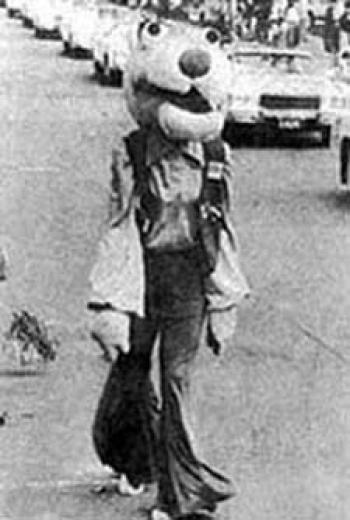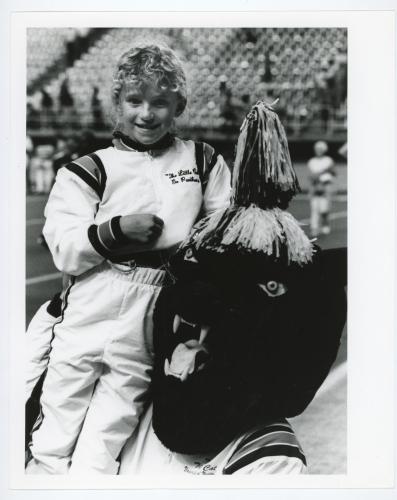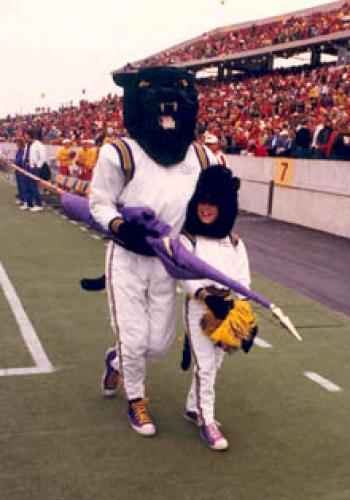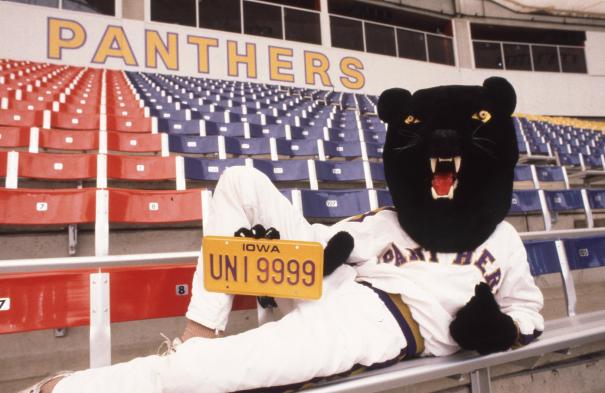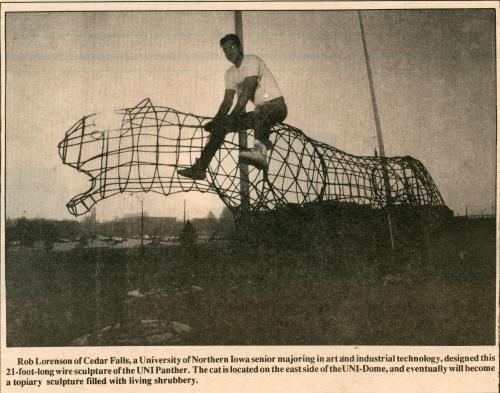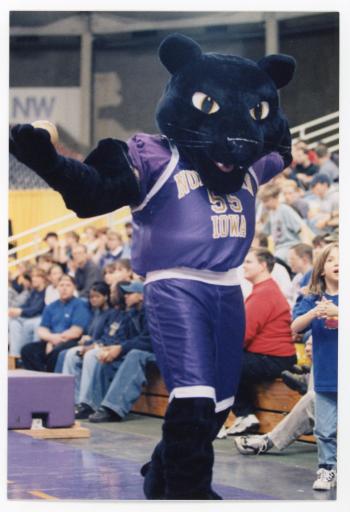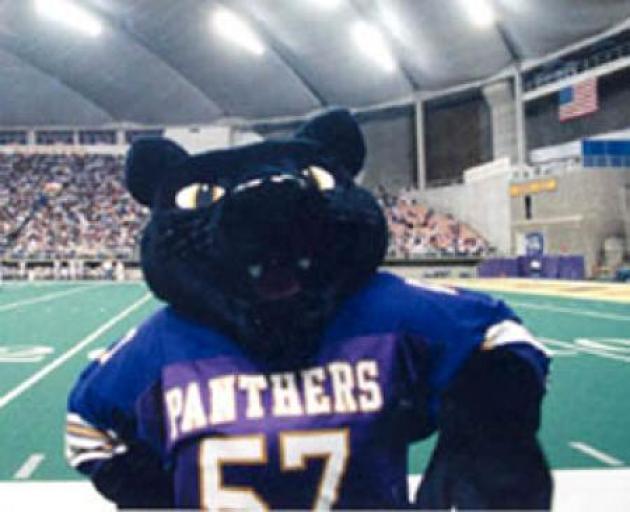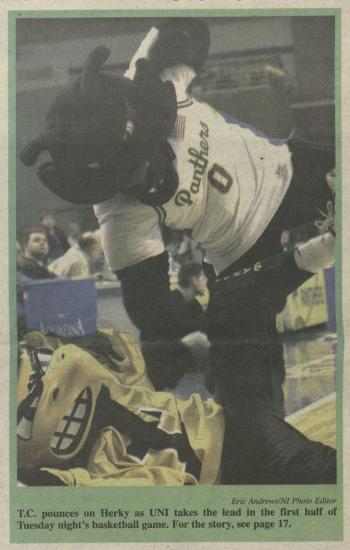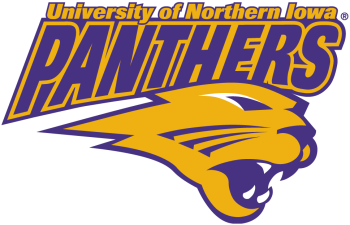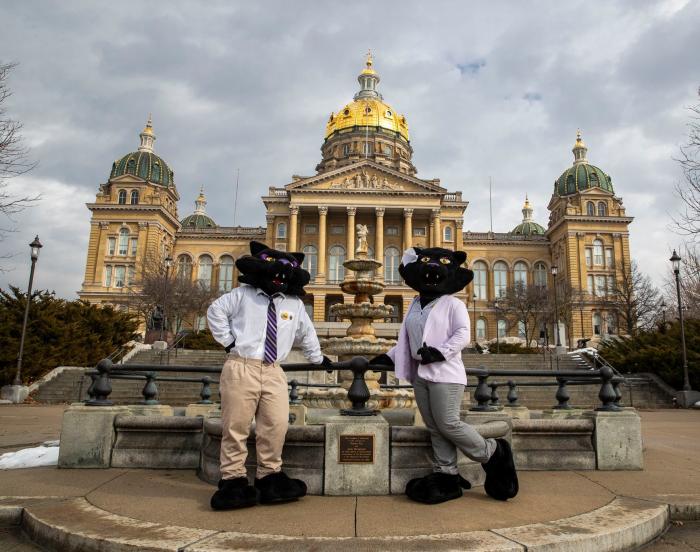On September 8, 1931, the following appeal appeared in the student newspaper, the College Eye, under the headline "Contest Started for School Name":
"Who wants to be called Tutors, Pedagogues, and Teachers all the time? Every leading school in the country has some name by which they are known in the realm of sport. Iowa is known as the Hawkeyes, Minnesota as Gophers, Chicago as Maroons, and so forth. Why not give Iowa State Teachers College a name which signifies something characteristic about the school besides the fact that it is a teachers college?"
The article goes on to note that entries would be judged by a member of the Department of Physical Education, other faculty, and students ("Three Students...").
When the contest was announced, the Iowa State Teachers College had already been participating in intercollegiate athletics on a regular and organized basis for over thirty-five years. Teachers College teams had participated in contests with other Iowa colleges, and occasionally with teams from outside the state, in baseball, football, basketball, and track and field. Until the end of World War I, students certainly did get excited about these contests, but they probably took just as much pleasure in the success of the school's debate and oratorical teams. The school's sole mission, the preparation of teachers, tended to attract many more women than men to the Teachers College. And, consequently, the school did not have an abundance of material from which to draw its athletes in the days when only men participated in intercollegiate athletics. Following the war, however, the college made a distinct effort to attract men to the teaching profession. An important part of this effort was the addition of physical education courses to the curriculum that would help to prepare men for teaching positions that included athletics coaching responsibilities. Improved athletics facilities, including the construction of the West Gymnasium, showed that the school was taking a more serious attitude toward intercollegiate athletics.
On September 18, 1931, the College Eye announced that Paul Bender, acting head of the Department of Physical Education for Men; George Holmes, professor of journalism; Robert Burley, president of the Student Council; and the sports editor of the College Eye would judge entries. The winner would receive a leather briefcase from the Berg Drug Company. Second place would be a dresser alarm clock from Chase Jewelry Store. Third place would be a season football pass ("Panther Tales").
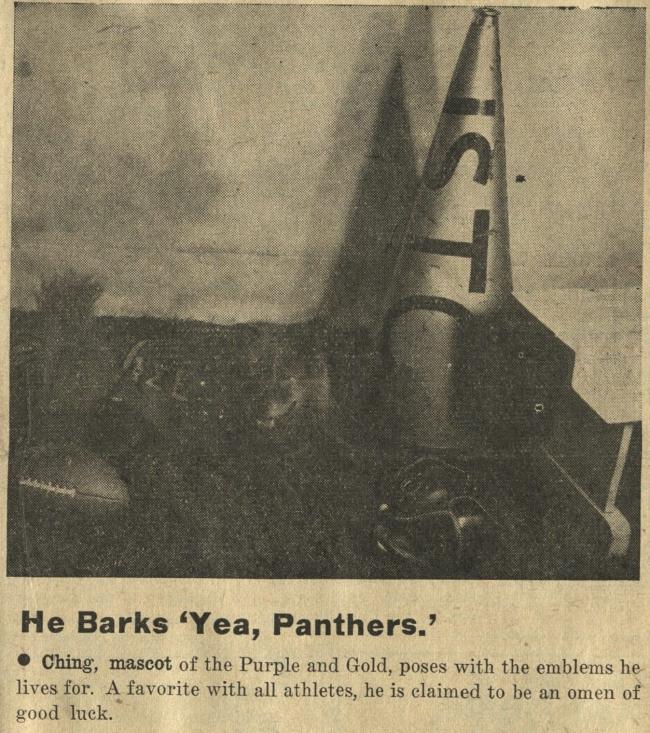
Burl Berry, a center on the football team and later its most valuable player, submitted the winning entry: the Iowa State Teachers College athletics teams would be known as the Purple Panthers. Keith Stapley and Kenneth Erwin won second and third places, respectively. Their second and third place entries in the team naming contest are not positively known at this time, but one of those entries was probably the Purple Grackles. The College Eye sports editor noted the characteristics of the panther that made it an appropriate nickname. "The sinuous grace and bestial ferocity of the panther make him one of the most savage and respected of the animals. He never leaps upon his prey without first sizing up the situation. and once he does strike he seldom misses." ("Notice Prize Winners!"). The Teachers College football team took the field for the first time as the Purple Panthers in a game against Columbia College of Dubuque on September 26, 1931. Students seemed to accept the change readily. The nickname was picked up immediately in the school sports pages, and small purple and gold panther heads served as programs for the Homecoming dance on October 22, 1932. The decorations for the site of the dance, the West Gymnasium, gave the impression of a panther's den ("Panther Heads..."). A stylized panther profile appeared in the 1938 College Eye ("Untitled).
However, a three-dimensional mascot personifying the nickname did not appear for some years. Indeed, during the middle 1930s, a chow dog named Ching, who lived at Phi Sigma Epsilon fraternity, gained at least some acceptance as the mascot for the entire school. Ching's own coat was reddish brown, but he wore a purple jacket trimmed in gold to football games ("Coeds don't...").
The two dimensional Panther appeared on the cover of the 1952 yearbook, the Old Gold, and as a unifying graphic element in that yearbook. Old Gold art editor Jack Stephenson was responsible for these representations (1952 Old Gold). And in an appeal for contributions, the alumni magazine, The Alumnus, said, possibly with tongue in cheek, that it believed the Panther's first name was actually Pericles, with Perky as a nickname (The Alumnus...).
The Panther mascot as we know it today, that is, as someone dressed in a panther costume, probably first appeared at a basketball game in January 1957 ("??? Confuses..."). The new Panther was considered to be part of the cheerleading squad. He apparently was a hit. In February 1957 the Pep Band performed a concert in the Georgian Lounge and featured an appearance by "Pepi" Panther. He showed up later that month at a similar event ("Social Life").
In the late 1950s the mascot's name often swapped between 'Perky' and "Pepi/Peppy". John Shannon, who wore the costume in 1960, seems to have been an especially active mascot. He had played quarterback on the freshman team until he broke his thumb and was sidelined for the season. After attending several games as a spectator, he decided that the Teachers College needed an active, outdoor mascot like Herky the Hawk or Cy the Cyclone. He made a Panther head and raised spirits at the last several regular games of the season. The Pep Council was so impressed that they sponsored a brand new costume for the mascot to wear when the football team participated in a post-season game, the Mineral Bowl. The suit, which cost between $40 and $50, was complete with tail, claws, a gold "I", and a new head ("Peppy the Panther...").
Matters drifted a bit in the 1960s. One writer to the College Eye suggested that the school acquire a real, live panther as a mascot ("Cheerleaders need..."). Later, Dwight Bachman, an African-American student leader at UNI, made the humorous suggestion that the school should change the Panther nickname because the excellent performance of some of the African-American football players might prompt an investigation of Black Panther activities in Cedar Falls ("Endeavor for...").
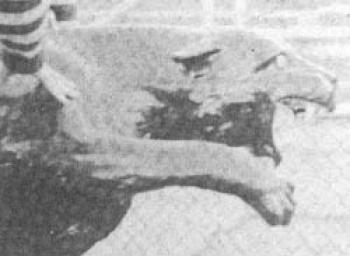
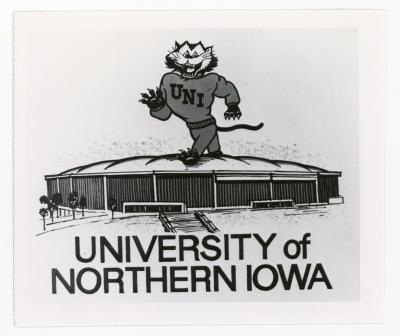
Still, the nickname and the symbol did survive the 1960s and actually came on quite strong when promotion for the construction of the UNI-Dome began. A jaunty Panther appeared in 1973 striding across the proposed Dome roof. This promotional campaign tied the Panther and the UNI-Dome together to help combat the controversy over the construction of the dome, as the project had a rough and prolonged construction ("Panther slips..."). There was protest against this campaign, as some thought that the dome was becoming a new mascot. The Panther mascot costume of the time seemed to show at least as much resemblance to a raccoon as to a panther ("Hodge Podge...").
In 1980, the UNI Century, a university promotional publication, featured a nice article on the current Panther and on costume-making in general. Barry Delp, a UNI graduate student and former wrestler, made costumes for Mr. and Mrs. Panther as well as an off-shoot mascot, the Pink Panther, because he could not find anyone else to make good quality costumes at what he considered to be a reasonable price ("Meet Mr. and Mrs...."). Mr. Delp, who wore the Pink Panther costume himself, said that current tastes seemed to run to cartoon-like representations, rather than realistic costumes. His work was good enough that other schools asked him to make costumes for their mascots.
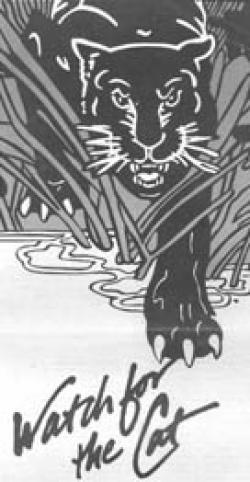 Intercollegiate athletics, with help from advertising agency Timmerman, Schreurs and Associates of Waterloo, put together a new marketing campaign in the middle 1980s: Watch for the Cat. This campaign featured a more realistic Panther logo with a sleek, menacing appearance. Artist Tom Bookwalter designed a limited edition print of the new Panther in purple, gold, and black in 1985 ("Watch for the Cat").
Intercollegiate athletics, with help from advertising agency Timmerman, Schreurs and Associates of Waterloo, put together a new marketing campaign in the middle 1980s: Watch for the Cat. This campaign featured a more realistic Panther logo with a sleek, menacing appearance. Artist Tom Bookwalter designed a limited edition print of the new Panther in purple, gold, and black in 1985 ("Watch for the Cat").
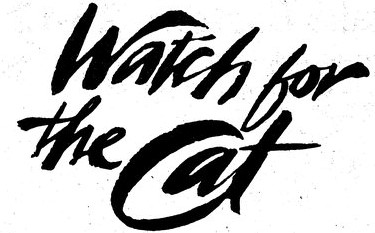
Also in the middle 1980s, possibly in connection with this same advertising campaign, the Panther began to be known as TC, initials for The Cat. In the fall of 1987 a little Panther, eight year old Megan Hardman, appeared on the scene as a companion to big Panther Steve Lorenz ("Not One...").
The Panther appeared in another interesting medium in 1990, when student Rob Lorenson designed a 23-foot long sculpture that was placed on the east side of the UNI-Dome. Plans were for the structure to be under planted with shrubbery to create a topiary Panther.
Also in the 1990s, in tune with an increased interest in physical fitness, the mascot appeared more svelte and occasionally in an athletic uniform.
The Panther nickname has not been seriously challenged over its seventy year history, though, just occasionally, someone will make a humorous suggestion or two. In 1981, for example, a letter to the Northern Iowan suggested that UNI needed a unique nickname, something that would stand out from all the other Bears, Lions, and Panthers. The writer suggested the nickname Unicorns, playing on the UNI prefix and the crop for which Iowa is best known ("Panthers vs. Unicrons"). A 1994 sportswriter noted that there were not any real panthers in Iowa, so how about some sort of wildlife that is native to campus, such as Campus Squirrels ("Let's Get..."). A few years later UNI Professor Ron Roberts humorously suggested in the Northern Iowan that the Corn Borers might be worth considering ("A New Mascot...").
The middle 1990s version of the Panther mascot did not please everyone; some thought that the lean, mean costume had been replaced by a chunkier, less athletic-looking version ("New Mascot..."). The Panther himself responded by noting that an aggressive look was only one possible aspect of the mascot. He said that the Panther took part in all sorts of activities, not just athletics contests. On a practical level he also noted that the old uniform was just wearing out ("New Mascot Defends...").
In 2001 the Panther mascot, now curiously referred to as "Tommy Cat" instead of "The Cat", was ranked tenth in the nation among school mascots and went on to national competition ("UNI mascot..."). In 2002 the Panther took fourth place in overall performance at the Universal Cheer and Dance Association camp and competition in Milwaukee ("Panthers nab..."). The mascot also received a paid invitation to similar competition in Florida in January 2004 ("School Spirit...").
In yet another round of re-design, the Panther logo changed again in 2002. CI Apparel made the initial design for the new, more stylized and ferocious Panther head. University Marketing and Public Relations staff members Beth LaVelle and Randy Darst put together the final design ("Panther Logo").
The main Panther mascot T.C. has been joined by T.K., initials meaning ‘The Kitten’, since 2010, where she made her debut as a cheerleader ("A Family Affair"). The two costumed mascots became acting ambassadors for UNI, often found at promotional events like UNI’s various days at the capitol ("'UNI day'..."), the Booths at the Iowa State Fair ("UNI to..."), and at UNI Family Weekends ("UNI hosts...").
In 2023 the Cedar Falls Tourism & Visitors Bureau announced a project called ‘Panthers on Parade’. This is a project to bring statues of T.C. decorated by local artists to Cedar Falls. Making T.C. not only UNI’s mascot, but a symbol for the Cedar Valley.
Sources Cited:
- “Three Students who submit best names for Tutor athletic teams are to receive awards”, in the College Eye, #17/01/01/03, University Archives, Rod Library, University of Northern Iowa.
-
“Panther Tales”, in the College Eye, #17/01/01/03, University Archives, Rod Library, University of Northern Iowa.
- “Notice Prize Winners!”, in the College Eye, #17/01/01/03, University Archives, Rod Library, University of Northern Iowa.
- “Panther heads will serve for dance programs”, in the College Eye, #17/01/01/03, University Archives, Rod Library, University of Northern Iowa.
- “Untitled”, in the College Eye, #17/01/01/03, University Archives, Rod Library, University of Northern Iowa.
- Old Gold 1952, in the Old Gold, #17/01/02/03, University Archives, Rod Library, University of Northern Iowa.
- The Alumnus Vol. 41, N.2, in the University Advancement Collection, #08/00/01, University Archives, Rod Library, University of Northern Iowa.
- “Coeds don't rate with Ching”, in the College Eye, #17/01/01/03, University Archives, Rod Library, University of Northern Iowa.
- “??? Confuses TC students”, in the College Eye, #17/01/01/03, University Archives, Rod Library, University of Northern Iowa.
- “Social Life to sponsor movie, band”, in the College Eye, #17/01/01/03, University Archives, Rod Library, University of Northern Iowa.
- “Peppy the Panther adds to school spirit”, in the College Eye, #17/01/01/03, University Archives, Rod Library, University of Northern Iowa.
- “Hodge Podge From Kamerick's Korner”, in the Northern Iowan, #17/01/01/04, University Archives, Rod Library, University of Northern Iowa.
- “Cheerleaders need live mascot”, in the College Eye, #17/01/01/03, University Archives, Rod Library, University of Northern Iowa.
- “Endeavor for blacks suggested”, in the Northern Iowan, #17/01/01/04, University Archives, Rod Library, University of Northern Iowa.
- “Panther slips into a new skin”, in the Northern Iowa Today, #17/01/01/04, University Archives, Rod Library, University of Northern Iowa.
- “Meet Mr. and Mrs. Panther", in the University Advancement Collection, #08/00/03, University Archives, Rod Library, University of Northern Iowa.
- “Watch for the Cat”, in the Northern Iowan, #17/01/01/04, University Archives, Rod Library, University of Northern Iowa.
- “Not one, but two UNI Panthers prowl area to create enthusiasm”, in the Northern Iowan, #17/01/01/04, University Archives, Rod Library, University of Northern Iowa.
- “Panthers vs. Unicorns”, in the Northern Iowan, #17/01/01/04, University Archives, Rod Library, University of Northern Iowa.
- “Let’s Get Real, there ain't no panthers in Iowa”, in the Northern Iowan, #17/01/01/04, University Archives, Rod Library, University of Northern Iowa.
- “New Mascot: 'wussy purple rat'”, in the Northern Iowan, #17/01/01/04, University Archives, Rod Library, University of Northern Iowa.
- “New Mascot Defends his Panther honor”, in the Northern Iowan, #17/01/01/04, University Archives, Rod Library, University of Northern Iowa.
- "A New Mascot for UNI", in the Northern Iowan, #17/01/01/04, University Archives, Rod Library, University of Northern Iowa.
- “Panther Logo gets a new, updated look”, in the Northern Iowan, #17/01/01/04, University Archives, Rod Library, University of Northern Iowa.
- "UNI mascot one cool cat", in the Northern Iowan, #17/01/01/04, University Archives, Rod Library, University of Northern Iowa.
- "Panthers nab fourth seed", in the Northern Iowan, #17/01/01/04, University Archives, Rod Library, University of Northern Iowa.
- "School Spirit in style with nationally-ranked mascot, dance team; T.C.'s got spirit, how about you?", in the Northern Iowan, #17/01/01/04, University Archives, Rod Library, University of Northern Iowa.
- "A Family Affair", in the Northern Iowan, #17/01/01/04, University Archives, Rod Library, University of Northern Iowa.
- "'UNI Day' to be held at Iowa capitol Feb. 16", in the Northern Iowan, #17/01/01/04, University Archives, Rod Library, University of Northern Iowa.
- "UNI to host interactive exhibit at Iowa State Fair", in the Northern Iowan, #17/01/01/04, University Archives, Rod Library, University of Northern Iowa.
-
"UNI hosts Family Weekend 2019", in the Northern Iowan, #17/01/01/04, University Archives, Rod Library, University of Northern Iowa.
Compiled by University Archivist Gerald L. Peterson, with research assistance by Jennifer Carlson and scanning by Gail Briddle, April-May 2004. Updated, February 9, 2015 (GP). Updated August 30, 2023 by Alexis Stuhrenberg.

